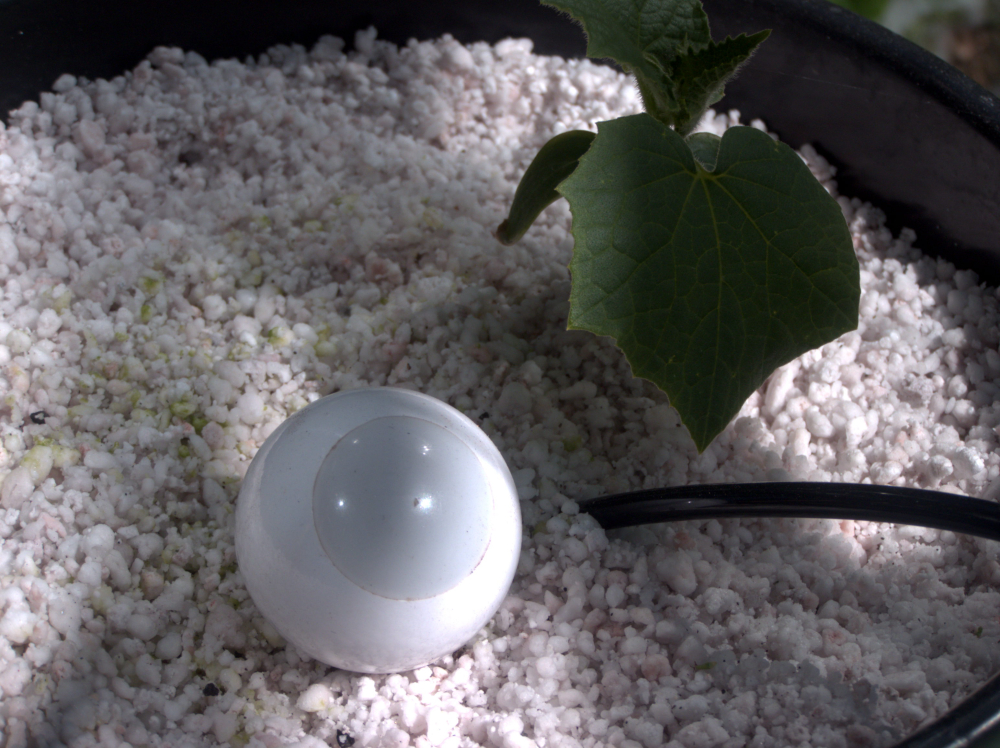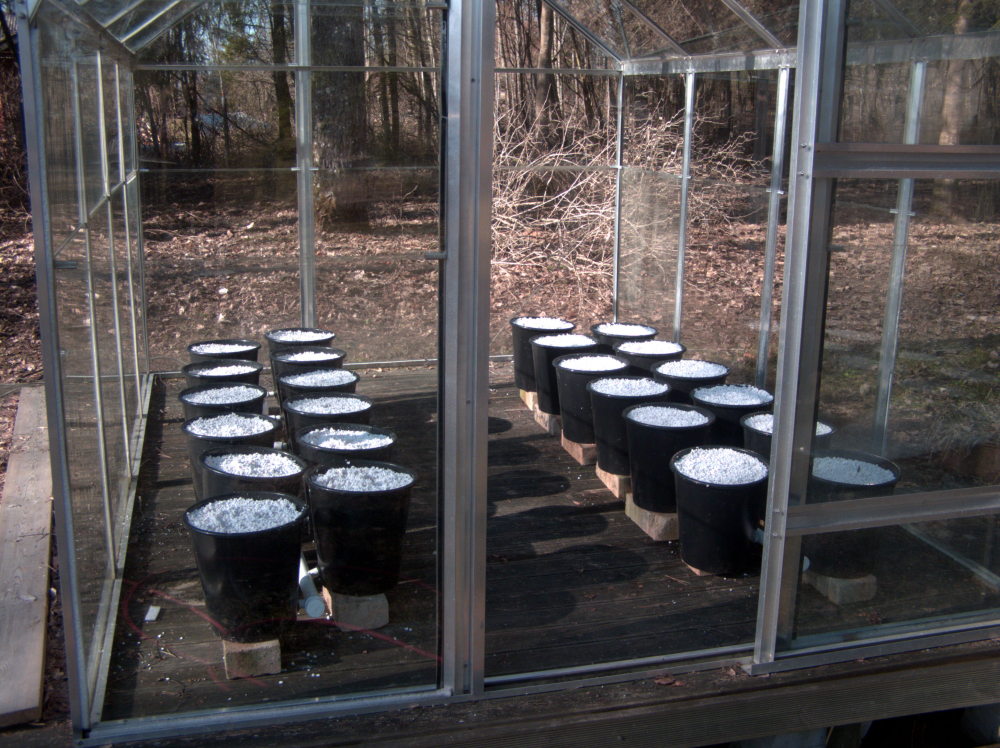MySensors Hydroponics Greenhouse project
-
To quote the classics - “Well, that escalated quickly.”
While waiting for the sensors to arrive, I started mulling over the entire project in my head. And I started thinking about scaling. My greenhouse is only 3 meters long but my parents greenhouse is almost 30 meters. Routing wires for soil sensors around the place is no fun.
So that got me thinking - does it need to be one node? And that in turn got me thinking - does it even have to be a node? Maybe a gateway would be the way to go?
So this is my current plan - a GSM/Wifi gateway with the general and more power hungry components( pH, EC, relative air humidity and ambient temp, relays). The gateway would be located near the pumps, sumps and other tech in the greenhouse.
Then the rest of the greenhouse can be filled with any number of sensors to monitor soil moisture, temperature and light levels at different places.
GSM gateway is almost finished, hopefully I can wrap it up tomorrow.
And as a final touch, I realized a controller of that kind of functionality could use a local user input. So it’s going to have a LCD and some buttons for set-up and things like starting/stopping pumps for maintenance.
-
Update:
LCD + rotary click encoder working
ArduinoMenu4 in place and easily expandable.
Relay control works 100%
EC/ppm measurement in place, not yet 100% working
SHT21 code in place, can confirm if working or not once the darn thing arrivesSome eye candy:





-
A thought I had recently: Those moisture pitchforks are usually HASL coated. Do I really want that in the soil of a plant I probably want to eat? Any thoughts anyone?
@elcaron said in MySensors Hydroponics Greenhouse project:
A thought I had recently: Those moisture pitchforks are usually HASL coated. Do I really want that in the soil of a plant I probably want to eat? Any thoughts anyone?
The answer is no :)
-
@elcaron said in MySensors Hydroponics Greenhouse project:
HASL
The pitchfork i'm currently using has solid copper traces on the forks. For more long term use I'm planning on switching to capacitive soil moisture sensors. Those can be additionally coated with epoxy resin for example for added longevity.
-
Now that the GSM Gateway is done, I can start focusing more on the Greenhouse controller. I’m still waiting for the two most important components though - the pH sensor module and the stainless steel EC sensor probe. I’ve stumbled on another very good post on the EC topic which I’ll have to work through: https://thecavepearlproject.org/2017/08/12/measuring-electrical-conductivity-with-an-arduino-part1-overview/
-
A long overdue update.
In the end I basically ended up using a GSM gateway with a LCD and couple sensors (air temperature and air humidity) and two relays. The relays control my Dutch bucket system pump and ventilation fans.
As a separate sensor I'm using a Z-Wave multisensor to keep track of nursery temperatures and lux levels.
The pH meter module did arrive but I do not feel comfortable keeping it submerged in the nutrient solution at all times so I've been just taking a sample of the nutrient solution from the tank after mixing a new batch, and testing it indoors, at the computer.
As for the EC meter, I failed to get any of the "arduino only" examples to produce reliable readings. So I've ordered 5 PCB's for this thing: https://www.sparkyswidgets.com/portfolio-item/miniec-i2c-ec-interface/
Once they arrive, I'll see if I can get more reliable results with a separate module.So far the whole thing has been running almost perfectly. The only drawback is an occasional reboot of the gateway when switching off the Dutch bucket system pump. I'm using two separate power sources for Arduino and the pump, Added a 1000uF cap to the Arduino power rail and a flyback diode across the pumps power lines. Still getting that reboot about 50% of the time.
Some pics to wrap up my rant.
PS. Yes, that's a webcam in my greenhouse. It's taking hourly snapshots for a timelapse :)
My NFT rails for herbs. A good eye can spot some dill, basil and cilantro plants in there.

That's my "Nursery" - an old fish tank I can cover with a piece of glass when night temps dip below 10C

That's my Fibaro Motion sensor. An easy way to get some essential readings. Like the length of day, hours of sunlight, temperature.

This is my ratsnest. I should have moved the relays to a separate enclosure further away. Right now I think the arc when breaking contact is what's causing an EMP pulse and rebooting my Mega.

Ventilation fans. The temps soared to high 40's and low 50's with door and both ceiling hatches wide open. The fans kick in when air temp reaches 25C

-
Disconnecting the load eliminates the issue flat out.
I think your previous question just triggered a lightbulb. While the module does have optocouplers in place, I have the VCC bridging jumper in place. So essentially Arduino is still sharing the power with relay coils. I'll install a step-down to get a 5V line from the pump power supply and use that to drive the relays. I believe that should eliminate my reboot issues.
-
A quick video update: https://youtu.be/vnUFV_amSPQ
The tomatos and peas are trying to go through the roof. Cucumbers are close to follow. They are all aiming for the ventilation hatches - I think they are planning a grand escape...The NFT system pump stopped working coupe weeks after setting it up. Have not gotten around to ordering a new pump. That will be a project for next year.








